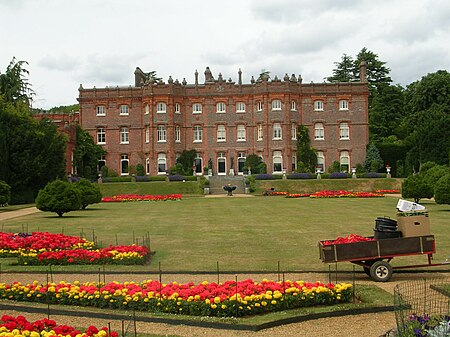Hughenden Manor
Benjamin DisraeliBiographical museums in BuckinghamshireCountry houses in BuckinghamshireEdward Buckton Lamb buildingsGrade II listed parks and gardens in Buckinghamshire ... and 8 more
Grade I listed buildings in BuckinghamshireGrade I listed housesGrade I listed museum buildingsHigh WycombeHistoric house museums in BuckinghamshireNational Trust properties in BuckinghamshirePrime ministerial homes in the United KingdomUse British English from February 2023

Hughenden Manor, Hughenden, Buckinghamshire, England, is a Victorian mansion, with earlier origins, that served as the country house of the Prime Minister, Benjamin Disraeli, 1st Earl of Beaconsfield. It is now owned by the National Trust and open to the public. It sits on the brow of the hill to the west of the main A4128 road that links Hughenden to High Wycombe.
Excerpt from the Wikipedia article Hughenden Manor (License: CC BY-SA 3.0, Authors, Images).Hughenden Manor
Coates Lane,
Geographical coordinates (GPS) Address External links Nearby Places Show on map
Geographical coordinates (GPS)
| Latitude | Longitude |
|---|---|
| N 51.6502 ° | E -0.7566 ° |
Address
Hughenden Manor (Hughenden)
Coates Lane
HP14 4LA , Downley (High Wycombe Community Board, Downley)
England, United Kingdom
Open on Google Maps







